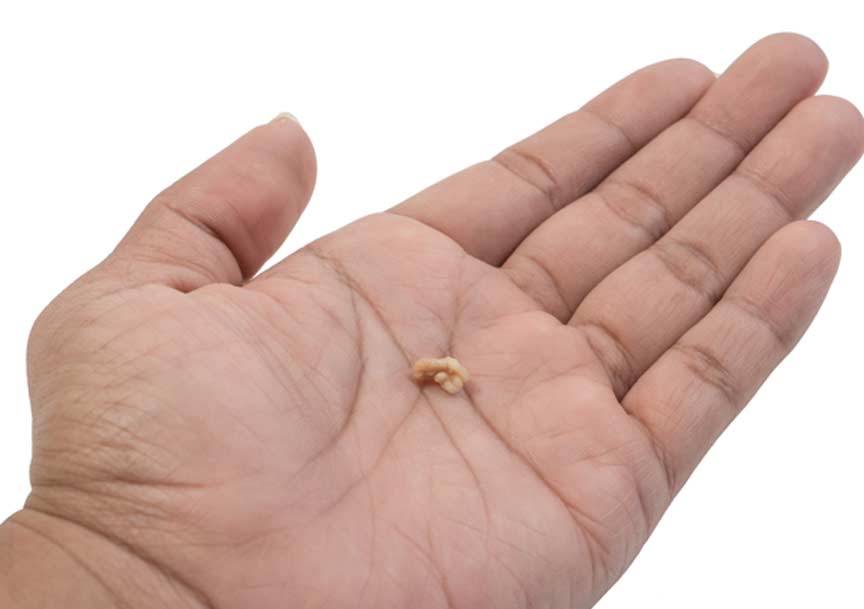
Tonsilloliths, or tonsil stones, are hard formations that develop in your tonsils.
They are yellow or white in color. It is not uncommon to have a stone and not know it since they range greatly in size, from the size of a grain of rice to that of a large grape.
Since they are relatively common, knowing the facts can help you to know what to do if one develops in your tonsils.
Causes
Your tonsils are comprised of tonsil crypts, which are a series of tunnels, pits and crevices. A variety of debris can get lodged in these crypts and accumulate. Common debris include mucus, food, dead cells and saliva. As the debris builds up, fungi and bacteria start to feed on it. This can cause the characteristic odor that often occurs with tonsil stones.
Several factors can cause these stones to develop, including:
- You have large tonsils
- Chronic tonsillitis (inflammation)
- Poor dental hygiene
- Chronic sinus issues


Symptoms
If your tonsil stones are small, it is possible that you will not experience any symptoms. However, should they increase in size, they can cause a variety of discomforts and noticeable symptoms, including:
- Bad breath
- Difficulty swallowing
- An ongoing cough
- Yellow or white debris visible on your tonsils
- Sore throat
- Ear pain
- Swollen tonsils
Treatment
Before treating tonsil stones, your doctor will make an accurate diagnosis. In most cases, visualizing your tonsils is enough to determine if stones are present. Your doctor will let see how large they are. This information will help them to decide which treatments are the most viable.
For many tonsil stones, you can use a toothbrush to scrape them from your tonsils. Your doctor can do this in the office or you can do it at home, as there is no need for anesthesia. At home, you can use saltwater as a gargle to dislodge them. Once they are loosened, you can use a clean cotton swab to get them out of the cavities you dislodged them from. This option is usually viable if the stones are visible.
If you frequently get tonsil stones, your doctor might recommend a tonsillectomy to completely remove your tonsils. This is a surgical procedure where you are usually put under anesthesia while the surgeon removes your tonsils. Most people go home the same day for recovery.
There is also cryptolysis, which can involve a laser or coblation. The laser type uses a special laser to get rid of the crypts where the stones occur. With the coblation type, radio waves are used to eliminate the crypts.
Prevention
There are a few things that you can do to reduce your risk of developing tonsil stones:
- Do not smoke cigarettes
- Practice good oral hygiene
- Stay hydrated by drinking water often
- Gargle with salt water regularly
If you suspect that you have a tonsil stone, make an appointment with your doctor at Nasal & Sinus Surgery Center. They can provide an accurate diagnosis and help you to determine which treatment options are the best for your case.
